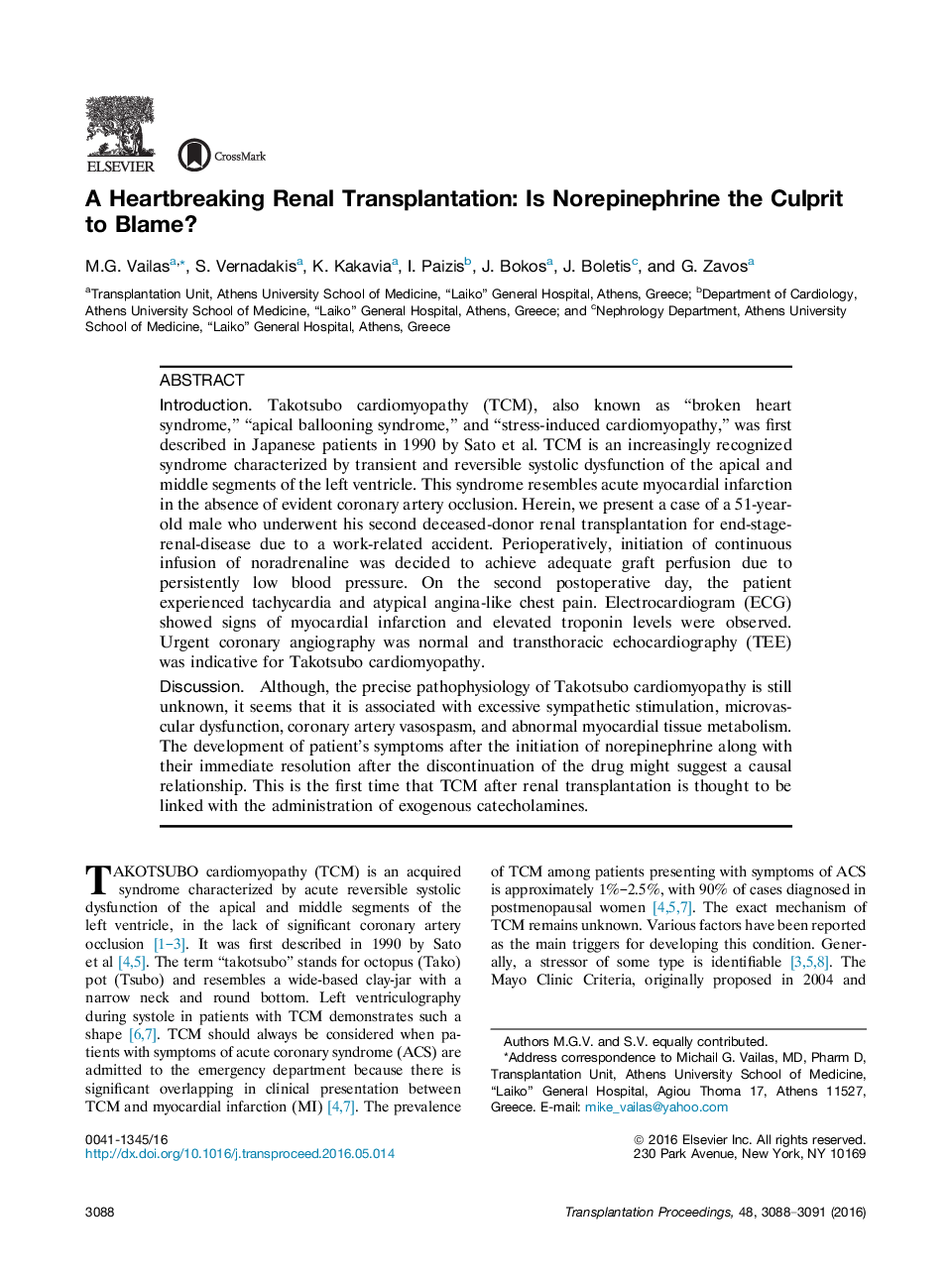| Article ID | Journal | Published Year | Pages | File Type |
|---|---|---|---|---|
| 5729038 | Transplantation Proceedings | 2016 | 4 Pages |
â¢TCM, also known as “broken heart syndrome,” “apical ballooning syndrome,” and “stress-induced cardiomyopathy” is a rare acquired syndrome characterized by acute reversible systolic dysfunction of the apical and middle segments of the left ventricle, in the lack of significant coronary artery occlusion.â¢The prevalence of TCM among patients presenting with symptoms of ACS is approximately 1%-2.5%, with 90% of cases diagnosed in postmenopausal women.â¢The exact mechanism of TCM remains unknown. Various factors have been reported as the main triggers for developing this condition. Generally, a stressor of some type is identifiable.â¢There is evidence of the role of the SNS in the pathophysiology of TCM via the increased levels of endogenous catecholamines after emotional or physical stress. Consequently, therapy with drugs with direct or indirect action on the SNS may trigger TCM.â¢To our knowledge, this is the third reported case of TCM following RT. The development of the patient's symptoms after the initiation of norepinephrine along with the immediate resolution after the discontinuation of the drug might suggest a causal relationship. This is the first time that TCM after RT is thought to be linked with the administration of exogenous catecholamines.
IntroductionTakotsubo cardiomyopathy (TCM), also known as “broken heart syndrome,” “apical ballooning syndrome,” and “stress-induced cardiomyopathy,” was first described in Japanese patients in 1990 by Sato et al. TCM is an increasingly recognized syndrome characterized by transient and reversible systolic dysfunction of the apical and middle segments of the left ventricle. This syndrome resembles acute myocardial infarction in the absence of evident coronary artery occlusion. Herein, we present a case of a 51-year-old male who underwent his second deceased-donor renal transplantation for end-stage-renal-disease due to a work-related accident. Perioperatively, initiation of continuous infusion of noradrenaline was decided to achieve adequate graft perfusion due to persistently low blood pressure. On the second postoperative day, the patient experienced tachycardia and atypical angina-like chest pain. Electrocardiogram (ECG) showed signs of myocardial infarction and elevated troponin levels were observed. Urgent coronary angiography was normal and transthoracic echocardiography (TEE) was indicative for Takotsubo cardiomyopathy.DiscussionAlthough, the precise pathophysiology of Takotsubo cardiomyopathy is still unknown, it seems that it is associated with excessive sympathetic stimulation, microvascular dysfunction, coronary artery vasospasm, and abnormal myocardial tissue metabolism. The development of patient's symptoms after the initiation of norepinephrine along with their immediate resolution after the discontinuation of the drug might suggest a causal relationship. This is the first time that TCM after renal transplantation is thought to be linked with the administration of exogenous catecholamines.
